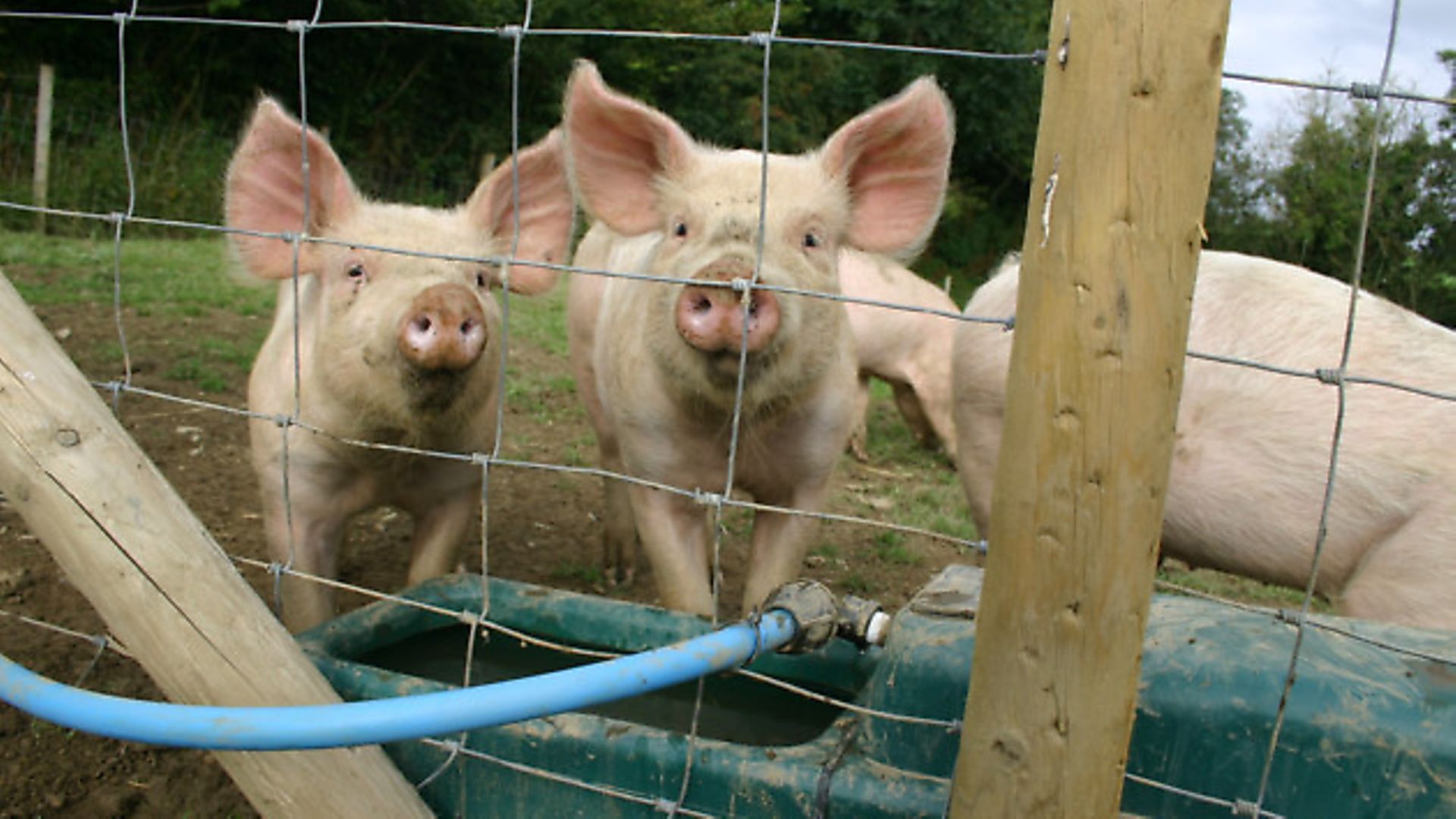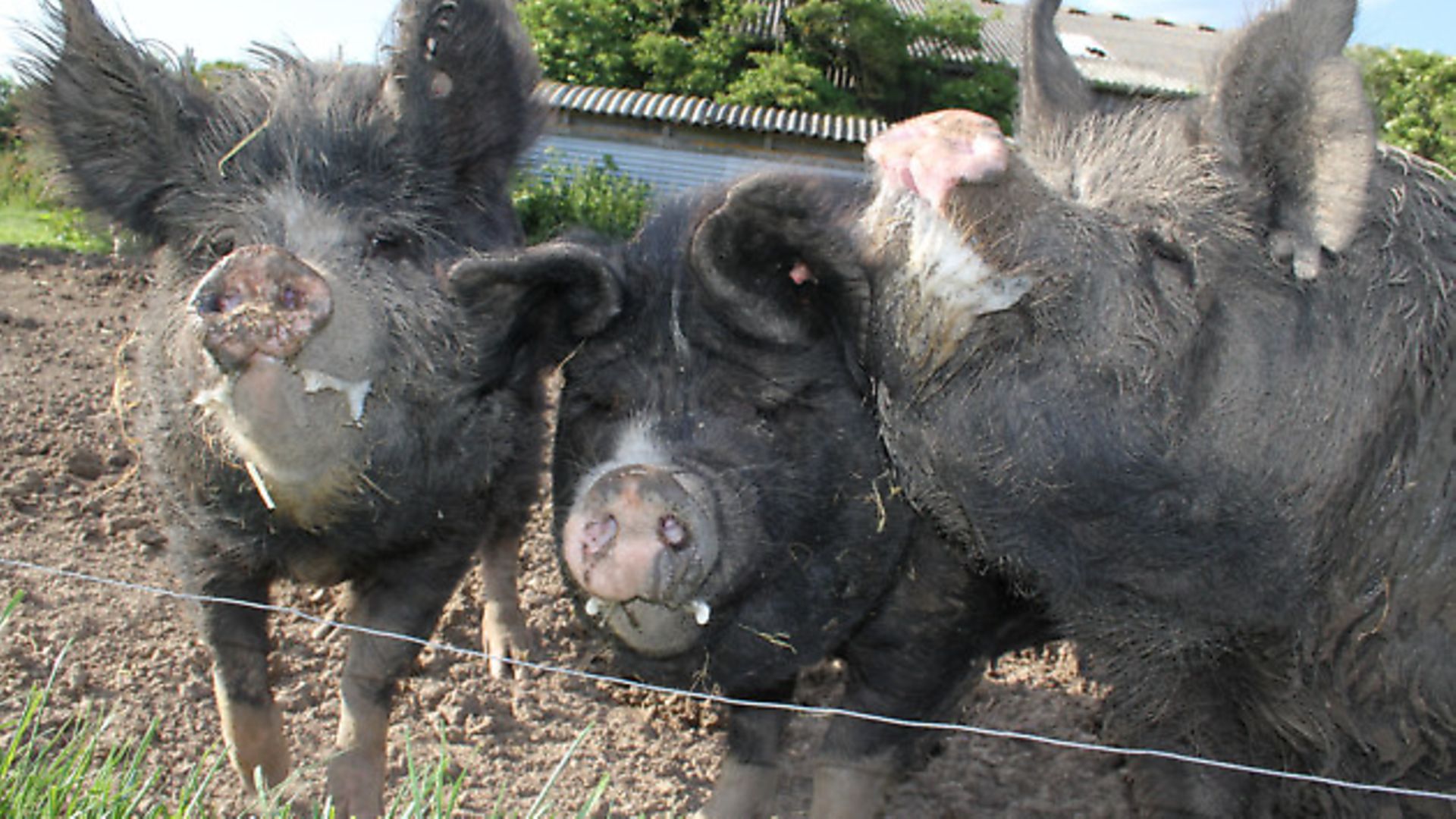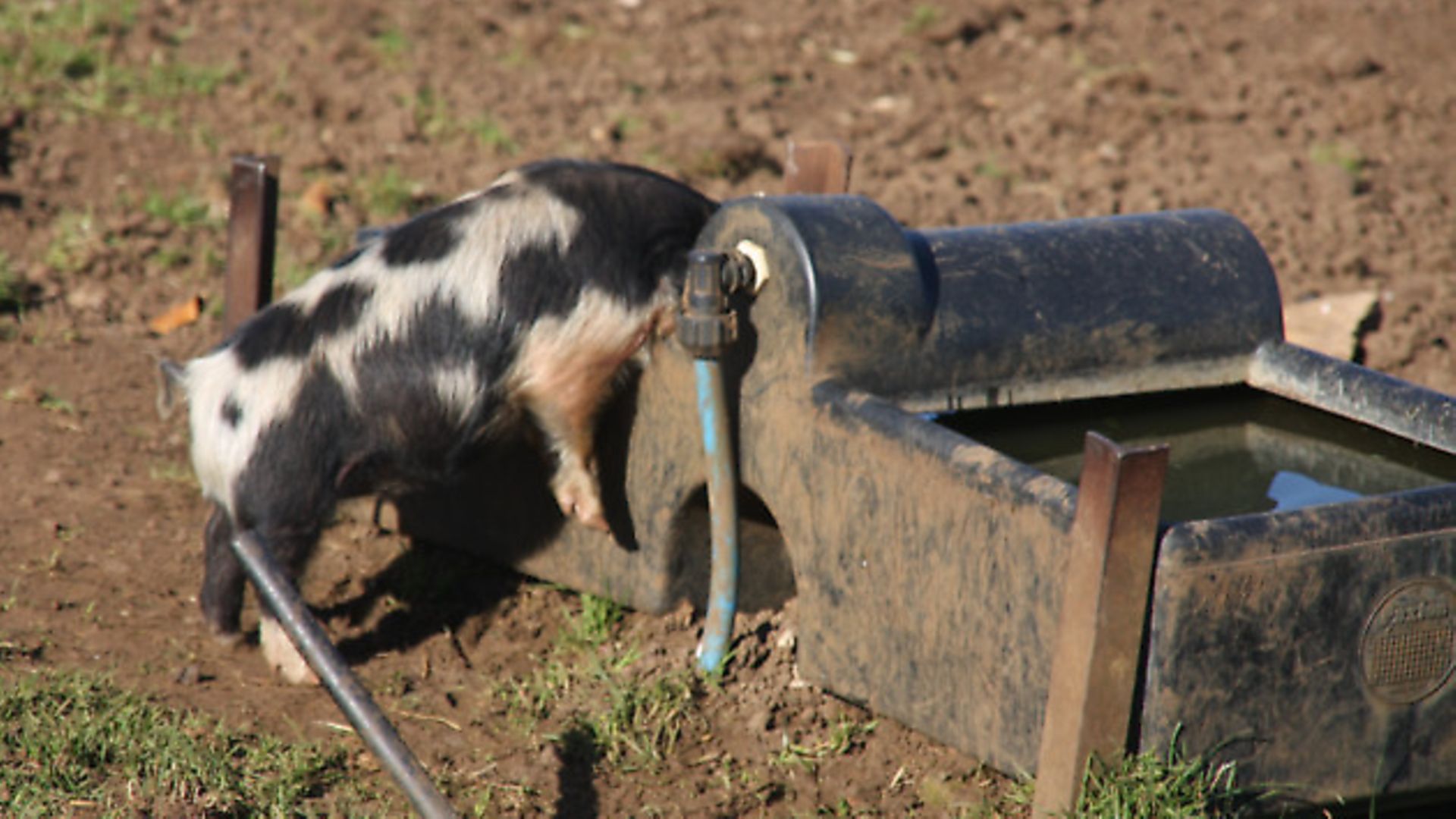Fancy keeping pigs but not sure if you can juggle it with a full-time job? LIZ SHANKLAND has some advice.

More and more people are turning their backs on urban life and setting their sights on moving to a rural idyll. Television programmes such as River Cottage, Escape to the Country, and Location, Location, Location have helped whet appetites and persuade hordes of people to sell up and relocate to much more peaceful surroundings.
Moving is all very well, however, but few people can afford to buy a smallholding, give up work, and live off the profit of the house sale. For most, the answer is keeping the day job and putting up with a longer commute. But what if you would like to try your hand at raising livestock? How much of a commitment would that be? A few sheep might be OK and wouldn’t require too much regular attention, but what about pigs?
Pigs can be extremely rewarding to keep, but their day-to-day requirements are greater than sheep and, if you’re not around during the day, you may feel that they could be too much of a responsibility to take on. Not necessarily. A lot depends on how many pigs you would like, what you want to do with them, how well set-up their accommodation is, and whether you have a Plan B in place for emergencies.

Making it work for you
Working pigs into your lifestyle is easier than you may think. I have several regular customers with busy working lives and a taste for expensive foreign holidays who buy weaners from me to fit in with their well-earned trips abroad. They work out in advance when they want their breaks in Barbados or some other exotic location are going to be, and then they order their weaners so that they reach slaughter weight a week or two before they jet off.
Buying in pigs to fatten is by far the easiest and most practical option. If you’re tied up with work and can’t easily nip home during the day to check on your pigs – or in the event of a crisis – forget about breeding and concentrate solely on raising for meat.
Here are a few of the golden rules that I pass on to newcomers attempting to juggle ‘proper’ work with keeping pigs.

1. Get your fencing right
With pigs, more than any other species, fencing has to be strong and reliable. The last thing you want is to receive a phone call at work from a neighbour back home, telling you your pigs are running riot through their garden or, worse still, racing down the road towards the village.
Really good stock fencing with a strand of barbed wire along the bottom will help deter rooting and lots of pig keepers (myself included) manage perfectly well this way. You do, however, have to make sure it’s done properly in the first place – no wobbly fence posts or floppy wire – and keep an eye on the condition from time to time.
Some of my friends insist on using electric fencing inside the perimeter stock fence, both to act as a robust deterrent to escapees, and also to prevent their pigs rubbing against fence posts and weakening them. Others rely entirely on electric fencing but, personally, I wouldn’t feel comfortable leaving it at that. One unexpected power cut (not uncommon in rural areas, I can tell you from experience!) or a battery losing charge and you could come home to a garden like the Somme – or a lot of irate neighbours. A combination of electric fencing and traditional fencing as a secondary line of defence is a good choice if you want real peace of mind.
2. Water supply
Pigs must have a constant supply of clean water. Severe water deprivation can kill a pig within a very short time because the normal levels of salt in the body become toxic. Keeping pigs watered is easier said than done. Experience will quickly show you that whatever container you put into the pen, the pigs will tip it over. Investing in automatic drinkers – the kind that work on a ballcock system – is the best way around this. It may cost you a bit in piping and other equipment, but it will be well worth it. If you can’t manage to get water to your pens, think how you might be able to install several, secure containers.
3. Planning ahead
Make the mornings easier for yourself by getting everything ready the night before. You don’t want to be rushing around looking for your food scoop, measuring out pig pellets, or (if you don’t have automatic drinkers), filling buckets and containers with water. Get as much as possible done in the evening, to give you a head start in the morning.
4. Work out a rota
Share the responsibilities with others in your household – or share your pig-rearing project with friends or neighbours living nearby – by varying the duties involved at various times of the day. Pigs should ideally be fed twice a day so, if, for instance, you or your partner are always the first off to work in the morning, arrange for each of you to do the early feed on certain days, so the burden doesn’t fall completely on one person. Knowing that you have some mornings when you can get straight off to work will help on those dark, wet, winter mornings.
5. Have ‘fair-weather’ pigs
Many people only rear pigs from spring to early autumn, to avoid the worst of the weather and to allow the land to recover for next time. If you want to do this, remember that you will have to book your piglets well in advance, to avoid the inevitable seasonal rush.
6. Prepare for a quick change
It may sound a bit daft and a bit simplistic, but laying out both your sets of clothes – the ones you’ll use for the pigs and the ones you’ll wear to your ‘proper’ job – beforehand will save you a lot of hassle in the morning. I wouldn’t even bother changing out of your pyjamas – pull on your overalls or waterproofs (invest in good ones and have a few sets to allow for drying-out time) and then get properly dressed when you get back.
Case study- Dr Michaela Giles
Dr Michaela Giles is used to people saying things like: “I have no idea how you do all this and work full-time”. A senior research scientist with the UK Government, Michaela also happens to breed pedigree British Saddleback and Middle White pigs, is a regional sector representative for the British Pig Association, runs courses in pig keeping, offers a pig pregnancy scanning service, chairs the West Sussex Smallholders’ Club, serves as a school governor, and juggles a whole host of other responsibilities. Both she and her husband decided to venture into pigs at a time when they both had extremely demanding jobs and both faced a long, daily commute. Not surprisingly, then, she says the key to keeping pigs alongside a full-time job is being organised.
“It’s definitely possible to combine full-time work with keeping pigs, even when there’s a commute involved,” she says. “In fact, it can be beneficial to the work-life balance. The key is good planning and never putting off jobs like fixing fencing or replacing that electric fence battery until tomorrow – always do it as soon as you can, because if you don’t, disaster is guaranteed to strike when you’re at work.”
Leading by example, Michaela has written a book for others in a similar situation to her own. The Commuter Pig Keeper will be published by 5M in the near future.
Image(s) provided by:
Archant
Archant
Archant







